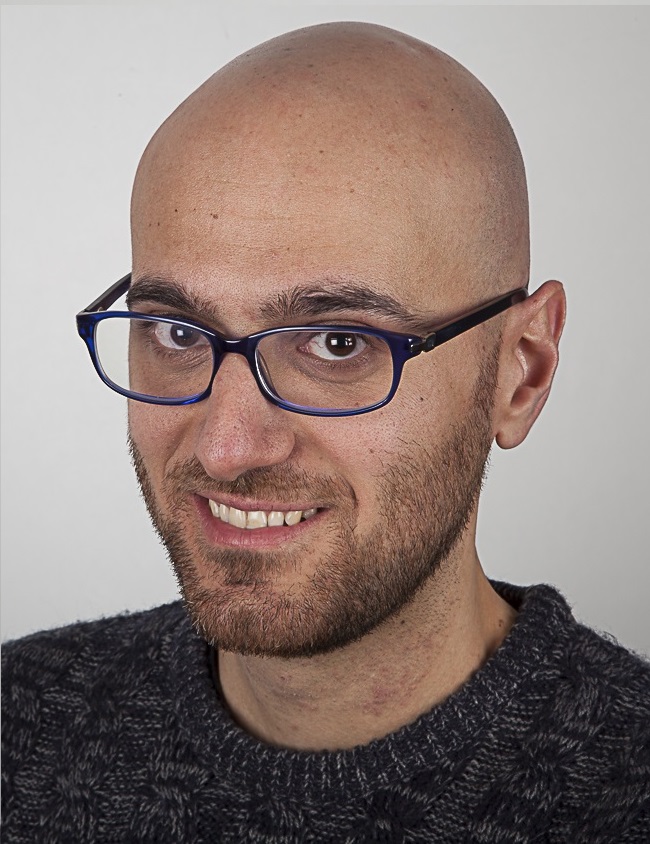VANACORE GIOVANNI MARIA
Biography
Giovanni Maria Vanacore studied Physics Engineering at the Politecnico di Milano (Milano, Italy), with a major interest toward condensed matter physics, nanotechnology and lasers. During his Ph.D. in co-tutorship between the Politecnico di Milano and the École Polytechnique X (Paris, France) under the guidance of Prof. Alberto Tagliaferri, Dr. Nicholas Barrett, Prof. Henri-Jean Drouhin, he worked on the investigation of electronic and structural properties of semiconductor nanostructures using spectro-microscopy techniques. In November 2011, he joined as postdoctoral scholar the group of Prof. Ahmed H. Zewail at the California Institute of Technology (Caltech), where his research activity was focused on the investigation of ultrafast phenomena in nanomaterials by means of ultrafast electron diffraction and ultrafast electron microscopy. In February 2016, he moved to Switzerland at the École Polytechnique Fédérale de Lausanne (EPFL) in the group of Prof. Fabrizio Carbone as senior scientist, while partially supported by the EPFL Fellowship program co-founded by Marie Sklodowska-Curie. Here, he explored new methods for the coherent longitudinal and transverse phase manipulation of a free-electron wave function using light pulses with attosecond precision. In December 2019, he became a Tenure Track Assistant Professor at the University of Milano-Bicocca where he founded the LUMiNaD laboratory. In November 2022, he was then promoted to Associate Professor of Condesed Matter Physics. His activity is dedicated to the investigation of ultrafast phenomena in nanoscale low-dimensional materials using ultrafast electron microscopy, as well as to exploring innovative methods for coherent light-induced electron beam shaping.
Research
Our research activity is dedicated to the investigation of ultrafast phenomena in nanoscale low-dimensional materials. In particular, we focus on semiconductor quantum dots, nanowires, graphene and 2D van-der-Waals solids, nano-plasmonic structures, energy-related materials, topological insulators and molecular systems. Our ultimate goal is the ability to finely control their unique electronic and structural properties by optically manipulating the subtle balance and correlation between the relevant degrees of freedom (electronic, spin, orbital and lattice). Because such intricate coupling gives rise to a multi-dimensional phase space, a complete understanding of the physical behaviour of such systems can only be achieved when simultaneously capturing their coherent dynamics at the proper temporal and spatial scales.
Publications
Ferrari, B., Duncan, C., Yannai, M., Dahan, R., Rosi, P., Ostroman, I., et al. (2025). Realization of a Pre-Sample Photonic-Based Free-Electron Modulator in Ultrafast Transmission Electron Microscopes. ACS PHOTONICS, 12(11), 5864-5873 [10.1021/acsphotonics.5c00549]. Detail
Garcia De Abajo, F., Polman, A., Velasco, C., Kociak, M., Tizei, L., Stephan, O., et al. (2025). Roadmap for Quantum Nanophotonics with Free Electrons. ACS PHOTONICS, 12(9), 4760-4817 [10.1021/acsphotonics.5c00585]. Detail
Bravi, M., Ferrari, B., Ostroman, I., Duncan, C., Rosi, P., Habibzadeh, P., et al. (2024). Advancing Ultrafast Transmission Electron Microscopy with Dielectric Metalenses. In The 17th European Microscopy Congress (EMC 2024) (pp.1-4) [10.1051/bioconf/202412903005]. Detail
Testa, F., Salvioni, L., Giustra, M., Ostroman, I., Ferrari, B., Duncan, C., et al. (2024). A new approach for direct visualization of unlabeled lipid nanoparticles for intracellular pathway analysis. Intervento presentato a: European Microscopy Congress 2024 - 25 - 30 August 2024, Copenaghen, Denmark. Detail
Ostroman, I., Duncan, C., Ferrari, B., Bravi, M., Lee, H., Gentile, A., et al. (2024). MAX phase-based nanocomposites for LIBs negative electrodes investigated by multi-approach TEM analysis. Intervento presentato a: European Microscopy Congress 2024, Copenhagen. Detail
